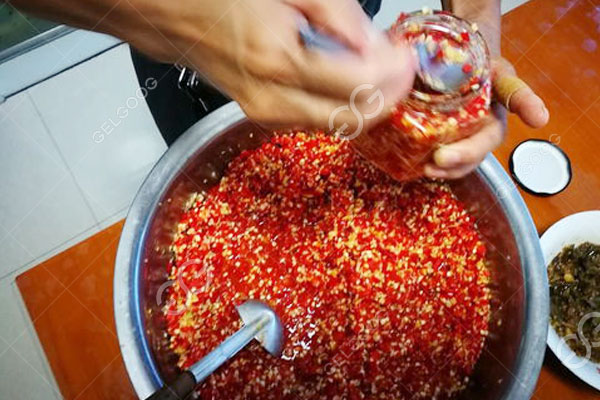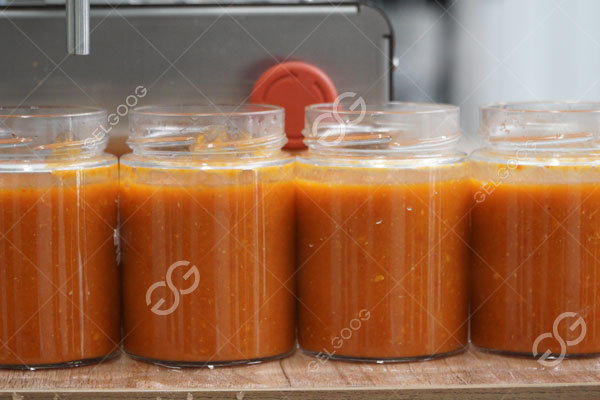What Is The Production Process Of Chilli Sauce?
Chilli sauce is a popular condiment made from chili peppers, vinegar, and other ingredients. It is used to add flavor and heat to a variety of dishes, including pizza, tacos, burritos, and stews.
The production process of chili sauce varies depending on the specific recipe and the scale of production. However, there are some general steps that are followed in most commercial chili sauce production lines.
- Selecting the chili peppers: The first step is to select high-quality chili peppers. The type of chili peppers used will affect the flavor and heat of the sauce. Some common types of chili peppers used in chili sauce production include jalapeños, habaneros, and serranos.
- Cleaning and crushing the chili peppers: The chili peppers are then washed and crushed. This can be done using a variety of methods, such as a food processor or a chili pepper grinder.
- Cooking and blending the chili peppers: The crushed chili peppers are then cooked and blended with other ingredients, such as vinegar, salt, and sugar. The specific ingredients and cooking time will vary depending on the recipe.
- Sterilizing the mixture: Once the chili sauce is cooked and blended, it is sterilized to kill any harmful bacteria. This can be done by heating the sauce to a high temperature or by using a chemical sterilizer.
- Packaging the chili sauce: The sterilized chili sauce is then packaged in suitable containers, such as glass jars, bottles, or cans. The containers are then sealed and labeled.

Some chili sauce producers may also ferment the chili peppers before cooking and blending them. This gives the sauce a more complex flavor.
Here is a more detailed explanation of each step in the chili sauce production process:
1. Selecting the chili peppers
The type of chili peppers used in chili sauce production will affect the flavor and heat of the sauce. Some common types of chili peppers used in chili sauce production include jalapeños, habaneros, and serranos.
Jalapeños are a mild to medium-hot chili pepper with a slightly sweet flavor. Habaneros are a very hot chili pepper with a fruity flavor. Serranos are a hot chili pepper with a citrusy flavor.
When selecting chili peppers for chili sauce production, it is important to choose peppers that are ripe and of high quality. Ripe chili peppers will have a brighter color and a more intense flavor.
2. Cleaning and crushing the chili peppers
The chili peppers are then washed and crushed. This can be done using a variety of methods, such as a food processor or a chili pepper grinder.
It is important to wash the chili peppers thoroughly before crushing them. This will remove any dirt or debris.
The chili peppers can be crushed to a variety of sizes, depending on the desired consistency of the chili sauce. For a smooth chili sauce, the peppers should be crushed until they are a puree. For a chunkier chili sauce, the peppers can be crushed into smaller pieces.
3. Cooking and blending the chili peppers
The crushed chili peppers are then cooked and blended with other ingredients, such as vinegar, salt, and sugar. The specific ingredients and cooking time will vary depending on the recipe.
Some recipes call for the chili peppers to be cooked in vinegar before blending. This helps to extract the flavor and heat from the peppers. Other recipes call for the chili peppers to be blended raw.
Once the chili peppers are cooked and blended, the sauce is typically simmered for a period of time to allow the flavors to develop.
4. Sterilizing the mixture
Once the chili sauce is cooked and blended, it is sterilized to kill any harmful bacteria. This can be done by heating the sauce to a high temperature or by using a chemical sterilizer.
Heating the sauce to a high temperature is the most common method of sterilization. The sauce is typically heated to a temperature of at least 180 degrees Fahrenheit for 30 minutes.
Chemical sterilization can also be used to sterilize chili sauce. However, this method is less common, as it can alter the flavor of the sauce.
5. Packaging the chili sauce
The sterilized chili sauce is then packaged in suitable containers, such as glass jars, bottles, or cans. The containers are then sealed and labeled.
The type of container used will depend on the shelf life of the chili sauce. Glass jars and bottles are typically used for chili sauce that has a shorter shelf life. Cans are typically used for chili sauce that has a longer shelf life.
Once the chili sauce is packaged, it is ready to be distributed to retailers and consumers.
Conclusion
Making chilli sauce at home is a fun and easy way to create a delicious and versatile condiment. By following the simple steps outlined above, you can make chilli sauce to your own taste and preferences.
We are chili sauce processing equipment manufacturer and supplier, if you want to start related business, we can provide complete chili sauce production line. If you want to know more information, you can contact us at any time.




